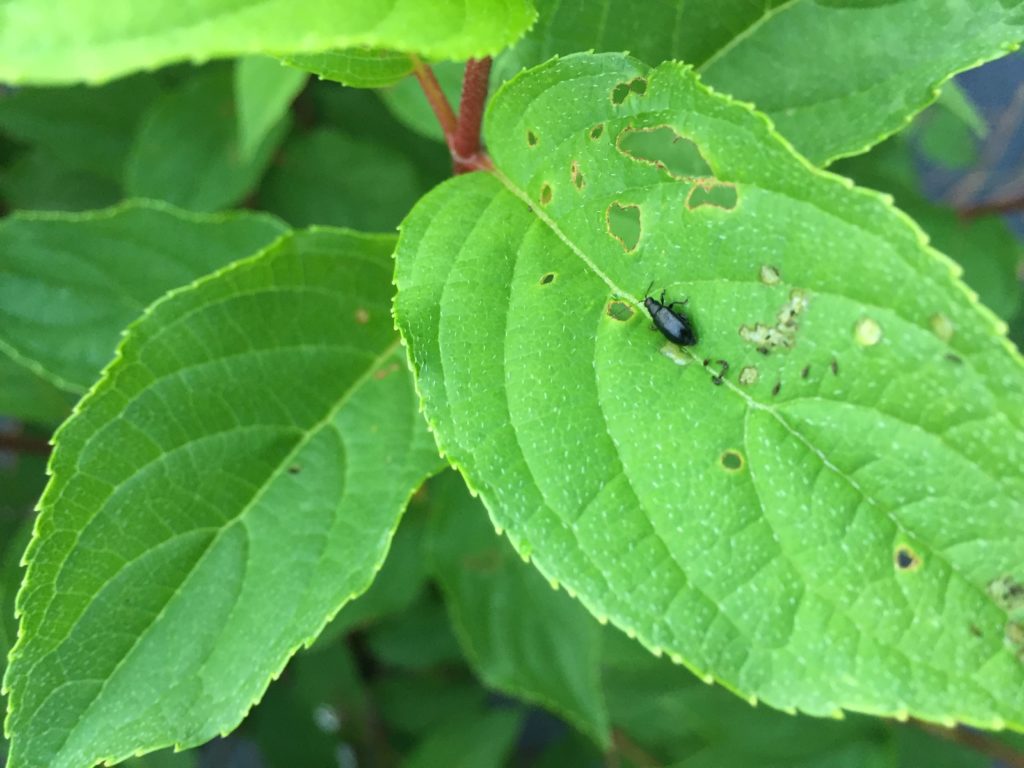Red Headed Flea Beetles in Nurseries
go.ncsu.edu/readext?528316
en Español / em Português
El inglés es el idioma de control de esta página. En la medida en que haya algún conflicto entre la traducción al inglés y la traducción, el inglés prevalece.
Al hacer clic en el enlace de traducción se activa un servicio de traducción gratuito para convertir la página al español. Al igual que con cualquier traducción por Internet, la conversión no es sensible al contexto y puede que no traduzca el texto en su significado original. NC State Extension no garantiza la exactitud del texto traducido. Por favor, tenga en cuenta que algunas aplicaciones y/o servicios pueden no funcionar como se espera cuando se traducen.
Português
Inglês é o idioma de controle desta página. Na medida que haja algum conflito entre o texto original em Inglês e a tradução, o Inglês prevalece.
Ao clicar no link de tradução, um serviço gratuito de tradução será ativado para converter a página para o Português. Como em qualquer tradução pela internet, a conversão não é sensivel ao contexto e pode não ocorrer a tradução para o significado orginal. O serviço de Extensão da Carolina do Norte (NC State Extension) não garante a exatidão do texto traduzido. Por favor, observe que algumas funções ou serviços podem não funcionar como esperado após a tradução.
English
English is the controlling language of this page. To the extent there is any conflict between the English text and the translation, English controls.
Clicking on the translation link activates a free translation service to convert the page to Spanish. As with any Internet translation, the conversion is not context-sensitive and may not translate the text to its original meaning. NC State Extension does not guarantee the accuracy of the translated text. Please note that some applications and/or services may not function as expected when translated.
Collapse ▲Adapted from original content by Danny Lauderdale. Several growers have reported red headed flea beetle adults on plants that were either kept in overwintering structures this winter (where beetles may emerge
earlier) and even some kept outdoors (where beetles may emerge later). Most everyone has made it over or very close to 800 Growing Degree Days by now. Itea virginica and Magnolia grandiflora are in bloom in central eastern NC and this is another sign that adults will be out soon if not already. Make sure to scout frequently now for adults and damage. If you have made systemic pretreatment (neonicotinoid or Mainspring) applications this should be a big help with management early on. Once adults emerge, systemic products are not as effective as if applied as a pretreatment. They may be effective if applied in a tank mix with contact products so you get the early knockdown with some longer lasting effects. Make sure to rotate insecticide classes when applying contact insecticides. IN recent tests we found that Xxpire which contains sulfoxaflor, a Group 4C insecticide, and spinetoram, a Group 5 insecticide and dinotefuran applied to foliage had persistent toxicity to 14 days after treatment. Acephate killed beetles well but only for a day. Hachi-Hachi (tolfenpyrad) was moderately toxic but reduced damage to leaves as well as the other products.



